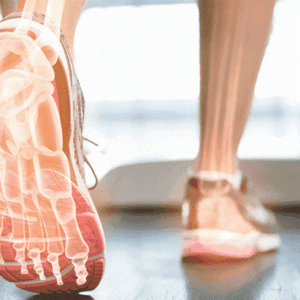Regular physical activity is an important aspect of living a healthy lifestyle, since it protects us from a variety of modern illnesses such as heart disease, obesity, type 2 diabetes, depression, and several malignancies. Sport and exercise are excellent ways to get regular physical activity. According to research, frequent sports and exercise can cut your risk of death by 20 to 40%. However, it is critical to explore how to prevent injury from sport and recreational exercise, so that you can appreciate the health advantages of sport and recreational exercise for many years to come.
According to a recent survey, exercise equipment caused the greatest injuries in any category of sports and recreation in 2022, totaling 409,000 injuries. This is an alarming statistic that raises important questions about why exercise equipment is causing such a high number of injuries. In this blog article, we will investigate the likely causes of these injuries.
Fortunately, there are several tried-and-true strategies for lowering your risk of injury, and experts believe that up to 50% of sports injuries can be avoided. To avoid injuries, follow these guidelines:

1) Stretch: Good flexibility reduces your chance of injury, so include stretching in your training routine. Stretching should be intentional and meaningful, as tokenistic stretching before any physical activity may not be beneficial.
2) Always begin with a warm-up: Muscles respond to heat and have a higher tolerance for stretching when they are warm. A proper warm-up that simulates sports-specific movements will improve blood flow, promote muscular suppleness, and aid in the prevention of sports injuries.
3) Maintain your strength: Regular resistance training has been demonstrated to decrease sports injuries in both adults and children, as well as improve sports performance. Include age-appropriate resistance exercise in your weekly training schedule.
4) Don’t push yourself too hard too soon: Recent research reveals that injury risk is primarily determined by “training load errors” (training too much or too little). This viewpoint contends that quick or severe swings in training load, rather than simply training too hard, predispose individuals to injury. So, progress carefully, maintain a modest training load if possible, and don’t return to pre-injury training levels too rapidly if you have time off due to injury or illness.
The Treadmill is the most common machine that causes injuries.
A 2016 study of workout-related hospital visits revealed that one in every three exercise-related hospital visits was related to jogging. In this data, more than 30% of people who visited the hospital for a workout-related running injury were on the treadmill! The most common running ailments were stress fractures, runner’s knee, and shin splints.
According to Consumer Reports, nearly 5,000 people were sent to the hospital due to a treadmill-related brain injury between 1997 and 2014. What is it about the treadmill that makes it so dangerous, and how can we avoid it?

Here are some safety tips for using a treadmill!
When you turn on the treadmill, stand on the sides of the machine.
Make use of the safety key! — This one is frequently forgotten, and it should not be. You attach the safety key to your clothing so that if you fall, the treadmill stops immediately.
You must have your feet on either side of the machine.
Keep your head up – Looking down causes us to lose our balance.
Do not get off a treadmill that is moving.
Prevention of Running Injuries
Running is a wonderful method to burn calories, increase your heart rate, and get your cardiovascular system beating, but it may also result in a variety of problems that can sideline runners with acute or chronic injuries.
Shin Splints
A shin splint is caused by overuse of the muscles and, if left untreated, can develop into a stress fracture or a complete fracture. Shin splints can be caused by running in unsupportive shoes, extensive running on hard ground, repetitive and continuous stress on the shin area, inflexibility, or a sudden increase in physical activity. Shin splints can cause severe discomfort in the affected area, so it is critical to rest and ice the area when healing from an injury. To avoid this injury in the future, it is recommended that you invest in supportive shoes, avoid running on hard or uneven surfaces, stretch your muscles, strengthen your calf muscles, and do not abruptly increase the frequency or intensity of your exercises too rapidly.

Running Knee
Another common running ailment is the well-known runner’s knee. Another overuse injury that causes pain in, around, and behind the knee cap.
The same causes that cause shin splints can cause a runner’s knee injury, such as unsupportive shoes and hard or uneven ground.
Runner’s knee can also occur if the athlete overstrides on the run, causing the knee to overextend.
Because each person and injury is unique, it is critical to monitor your pain, rest, and put ice on the affected area.
If the pain lasts for several days and forces you to stop exercising, it may be beneficial to consult with a physical therapist near you to learn how your injury originated and future preventative measures.
Weights That Aren’t Weighted
Free weights are not to be taken lightly; they account for 90% of all weight lifting injuries. Dropping weights, pinching yourself with weights, lifting too much weight, incorrect lifting technique, strains, and improperly fastened weights are all common causes of free weight injuries.
The first precaution to take while using free weights is to lift in an area away from other people where there is no risk of dropping a weight or striking someone with your weight. Also, before lifting big weights, ensure that the pin is securely placed into the weights and that the weight is locked into place. If you want to increase the weight you’re lifting, go slowly and make sure you’re using good posture and techniques. If you attempt to lift more than you can handle, you risk straining and overexerting your muscles. Incorrect alignment and lifting practices also provide a danger of future harm.
How Can I Prevent a Gym Injury?
Now that you’ve identified some of the most common hotspots for injuries in the gym, the following step is to determine how you may lessen your gym injuries. We’ve identified five crucial techniques to lower your chances of being injured at the gym.
Read the machine’s instructions!
This may seem apparent, but performing an exercise on a machine incorrectly increases your risk of injury.
Pay attention to your body.
Are you pushing yourself too far to the point of pain? If this is the case, pause and reconsider.
Request that an expert demonstrate how to operate the device.
There is no shame in seeking assistance! Some props aren’t always self-explanatory, so it’s better to ask for a fast demonstration than risk being wounded.
Make sure to do an aerobic warm-up
You don’t want to start your workout without first doing a few active stretches, even if they are only for five minutes. Active stretching warms up your cardiovascular system for the forthcoming activity and ensures that your muscles receive adequate blood and oxygen when used.
Begin slowly and gradually increase
Starting slowly and gradually increasing your intensity throughout your training session is an important step in reducing the risk of injury at the gym. In addition to easing into your workouts, you should focus on easing into the frequency and intensity of your workouts each week. As previously stated, you should pay attention to what your body is telling you, so if it feels you need a little more rest, go ahead and take it.
Stretching Before and After Workouts
Making stretching a priority is the next thing you can do to potentially lessen the likelihood of an accident at the gym. Stretching should be done both before and after your workout for the best benefits.
If you want to consult with one of our local Physical Therapists, please visit https://lborthoinstitute.com/orthopedic-services/physical-therapy-and-rehab/
